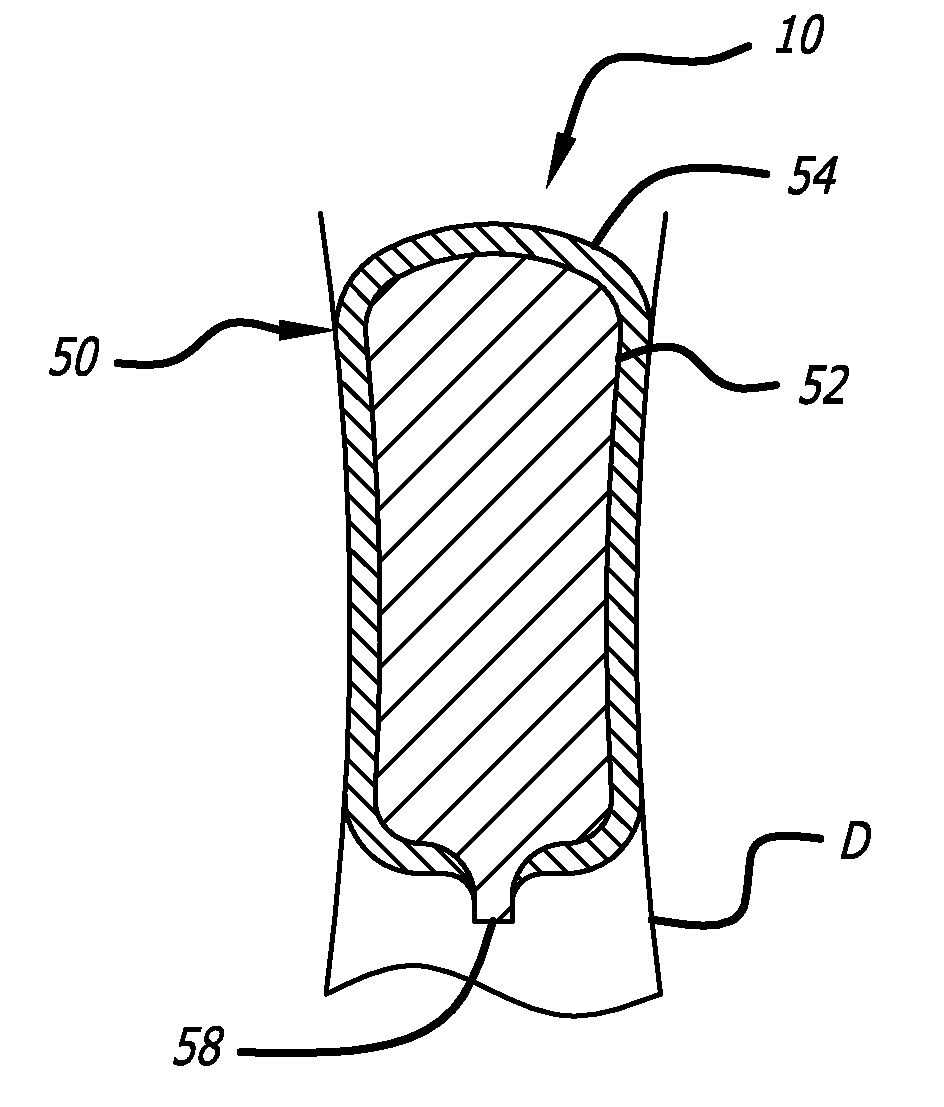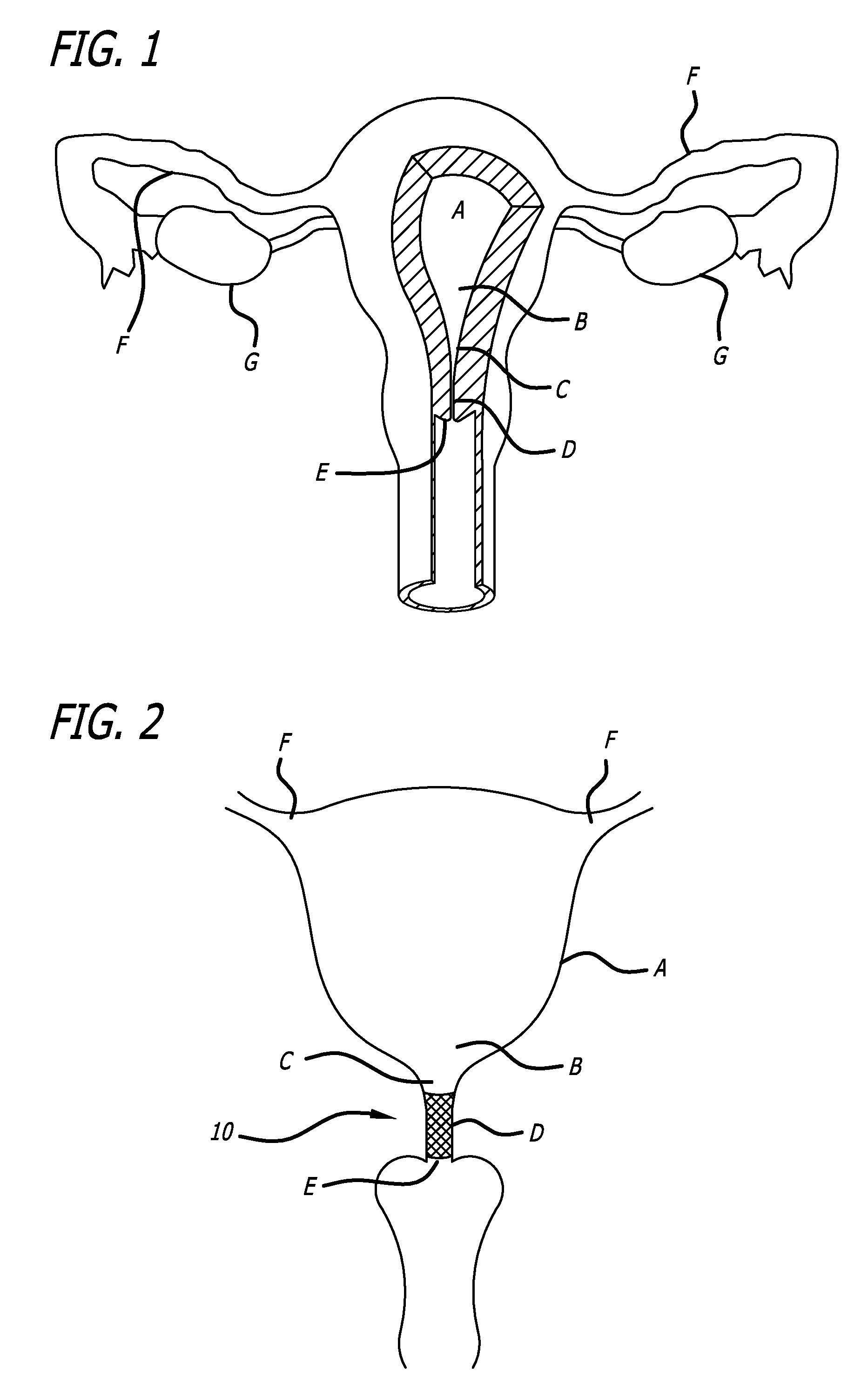Method And Apparatus For Occluding A Lumen
a technology of occlusion and lumen, applied in the field of occlusion methods and apparatuses, can solve the problems of affecting the treatment effect, affecting the quality of life of patients, so as to promote treatment and/or stop bleeding
- Summary
- Abstract
- Description
- Claims
- Application Information
AI Technical Summary
Benefits of technology
Problems solved by technology
Method used
Image
Examples
Embodiment Construction
[0041]FIG. 1 is an illustration of the female reproductive system, showing a uterus A, a cervix D and fallopian tubes F. The juncture between the uterus A and cervix D is often referred to in the art as the lower uterine segment (LUS) B. The cervix D includes an internal cervical orifice (internal cervical os) C and an external cervical orifice (external cervical os) E. Generally, the internal cervical os C measures approximately 2.3 mm to 6 mm in width, depending upon factors such as parity, the selected method of measurement and the day of a female patient's menstrual cycle when the measurement is made. The length of the internal cervical os C is approximately 10 mm. Also illustrated are the fallopian tubes F and ovaries G.
[0042]The methods and devices of the present invention are directed to occluding the passage of blood through the cervix. In some embodiments, the occlusion is a complete blockage; in others, blood flow is merely restricted. The result in either case is a reduct...
PUM
 Login to View More
Login to View More Abstract
Description
Claims
Application Information
 Login to View More
Login to View More - R&D
- Intellectual Property
- Life Sciences
- Materials
- Tech Scout
- Unparalleled Data Quality
- Higher Quality Content
- 60% Fewer Hallucinations
Browse by: Latest US Patents, China's latest patents, Technical Efficacy Thesaurus, Application Domain, Technology Topic, Popular Technical Reports.
© 2025 PatSnap. All rights reserved.Legal|Privacy policy|Modern Slavery Act Transparency Statement|Sitemap|About US| Contact US: help@patsnap.com



